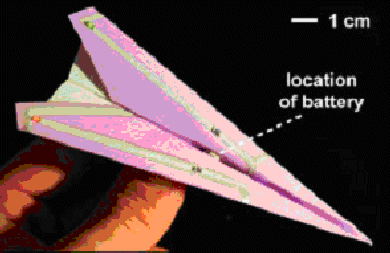The diverse field of organic electronics has a strong interface with the life sciences, especially when used in biological sensor applications. Sensitivity and specificity have been enhanced by using organic semiconductors and biomaterials in the construction of such devices. It is now possible to create a vast range of systems with properties such as biodegradability and, in the case of temporary medical devices, bioresorbability.
This mini-review by Christopher Bettinger and Zhenan Bao, Stanford University, USA, looks at the salient examples of biomaterials being implemented as structural components in organic electronic devices and how these may find use in biotechnological and medical applications.
.jpg)
Trimming fiber-based electronic circuits.
.jpg)
Burning fiber-based electronic circuits, the paper circuit burned in 3 s.

Topologically complex electronic circuits on paper demonstrating the ability to form foldable electronic circuits. A paper airplane circuit shown unfolded (left) and folded (right) with battery-powered red/green light-emitting diode (LED) wingtips. The circuit weighs less than 1 g and glides like a typical paper airplane.

An origami ‘crane’ shown unfolded (left) and folded (right) with battery-powered LED eyes. Electronic traces for both circuits comprised metallic wires (100 % In, thickness = 2 mm, width = 1 mm, length = 30 – 60 mm total) patterned on Yasutomo origami paper substrates.
- Biomaterials-based organic electronic devices
Z. Bao, C.J. Bettinger, Polym. Int. 2010, 59, 563–567.
DOI: 10.1002/pi.2827




